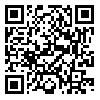Articles accepted at the time of publication
Back to the articles list |
Back to browse issues page
1- Instructor of Teaching Persian Language department in IKIU
2- Professor of Linguistics Department of Allameh University ,sahraei@atu.ac.ir
3- Associate Professor of Teaching EnglishDepartment of English Language, Persian Literature and Foreign LanguagesAllameh Tabataba'i University
2- Professor of Linguistics Department of Allameh University ,
3- Associate Professor of Teaching EnglishDepartment of English Language, Persian Literature and Foreign LanguagesAllameh Tabataba'i University
Abstract: (2077 Views)
The purpose of this research was to investigate the active vocabulary in written texts of non-Iranian Persian Language learners based on Lexical Diversity (LD). Using one of the formulaic measures of LD called Guiraud's Index (GI) LD of the written texts of the subjects of the present study was calculated and its relationship with variables such as nationality, gender, age, first language and university education was determined. First, according to the principles and rules of corpus transcribing, and using the LancsBox software, Types and Tokens of the texts of 251 learners from four nationalities, who participated in the final exams of the Persian Language Education Center of IKIU, were extracted and counted. After that, using GI, LD of each subject's text was calculated and the research hypotheses were evaluated. Results showed a significant difference between different nationalities in terms of LD. Also, from the perspective of first language and gender, texts of Arab subjects indicated significantly more LD than Chinese, and the texts produced by women indicated more LD than the texts of men. On the other hand, the two hypotheses related to the LD and age and university education were not confirmed, because these relationships were non-significant. The results and findings of this research can help teachers and examiners in the field of teaching Persian as a second/foreign language obtain a suitable tool for evaluating the lexical richness of written texts and gain insights on how to use lexical richness criteria in the evaluation of learners' texts.
Article Type: مقالات علمی پژوهشی |
Subject:
language teaching
Send email to the article author
| Rights and permissions | |
 |
This work is licensed under a Creative Commons Attribution-NonCommercial 4.0 International License. |







